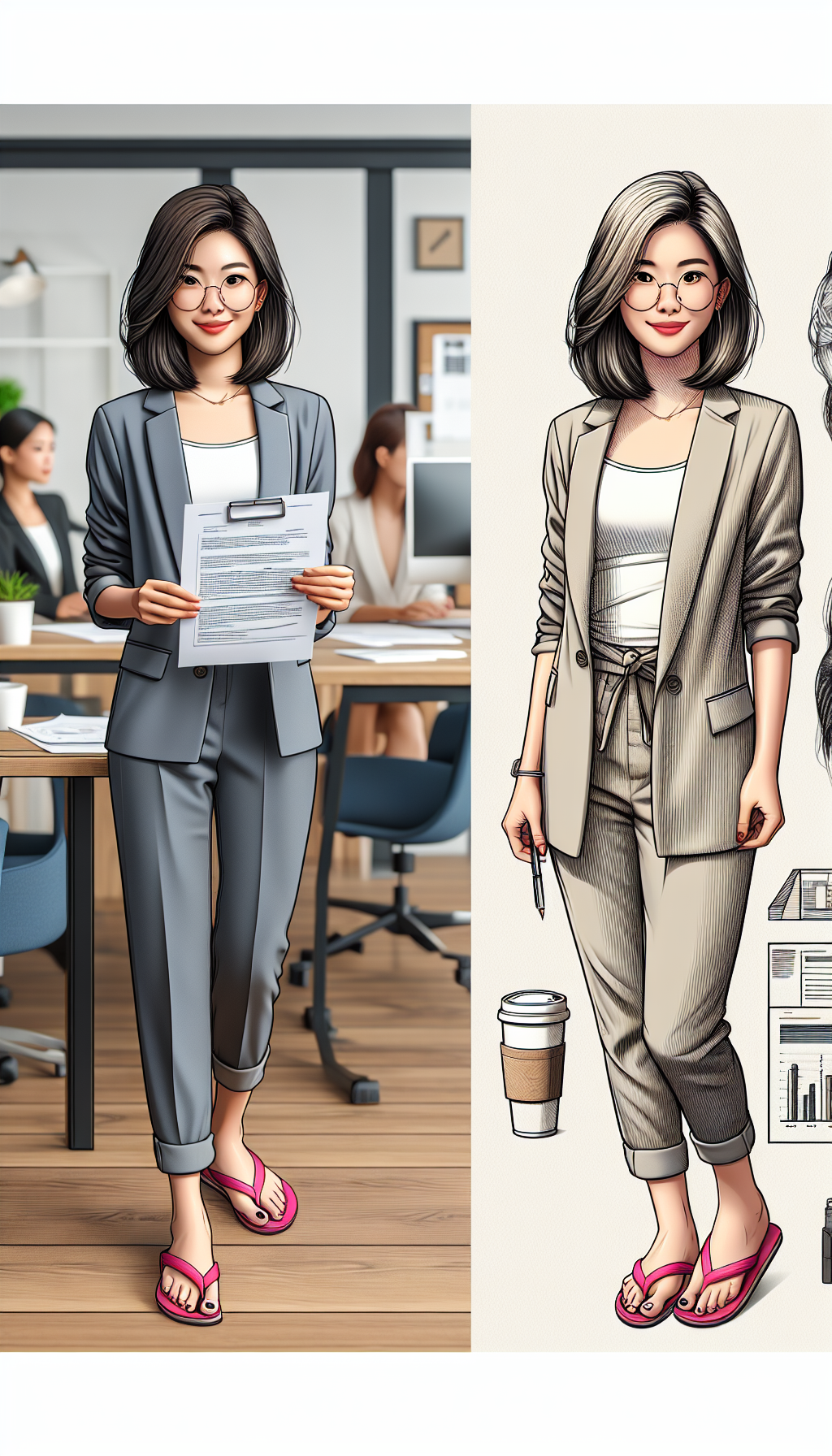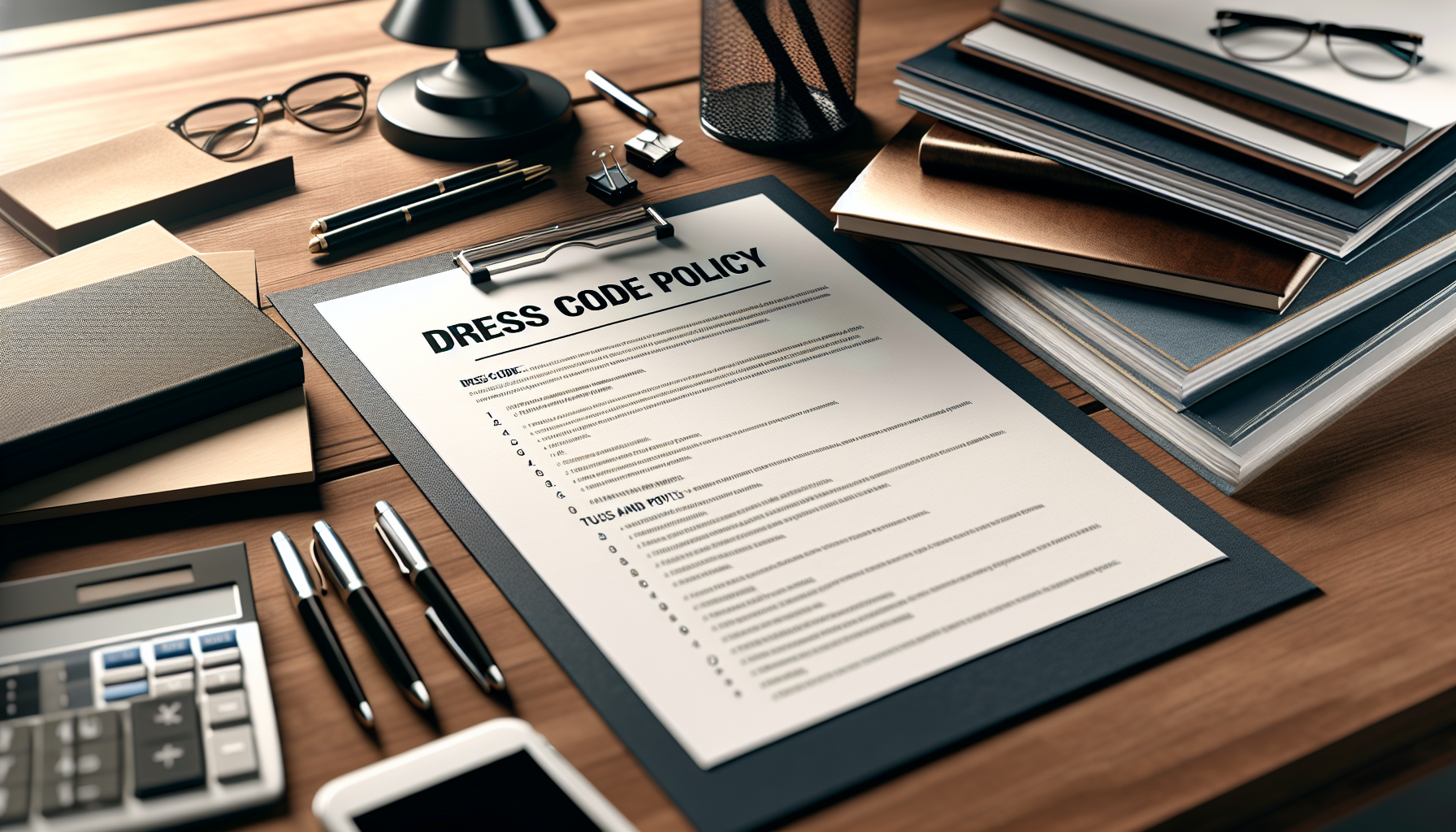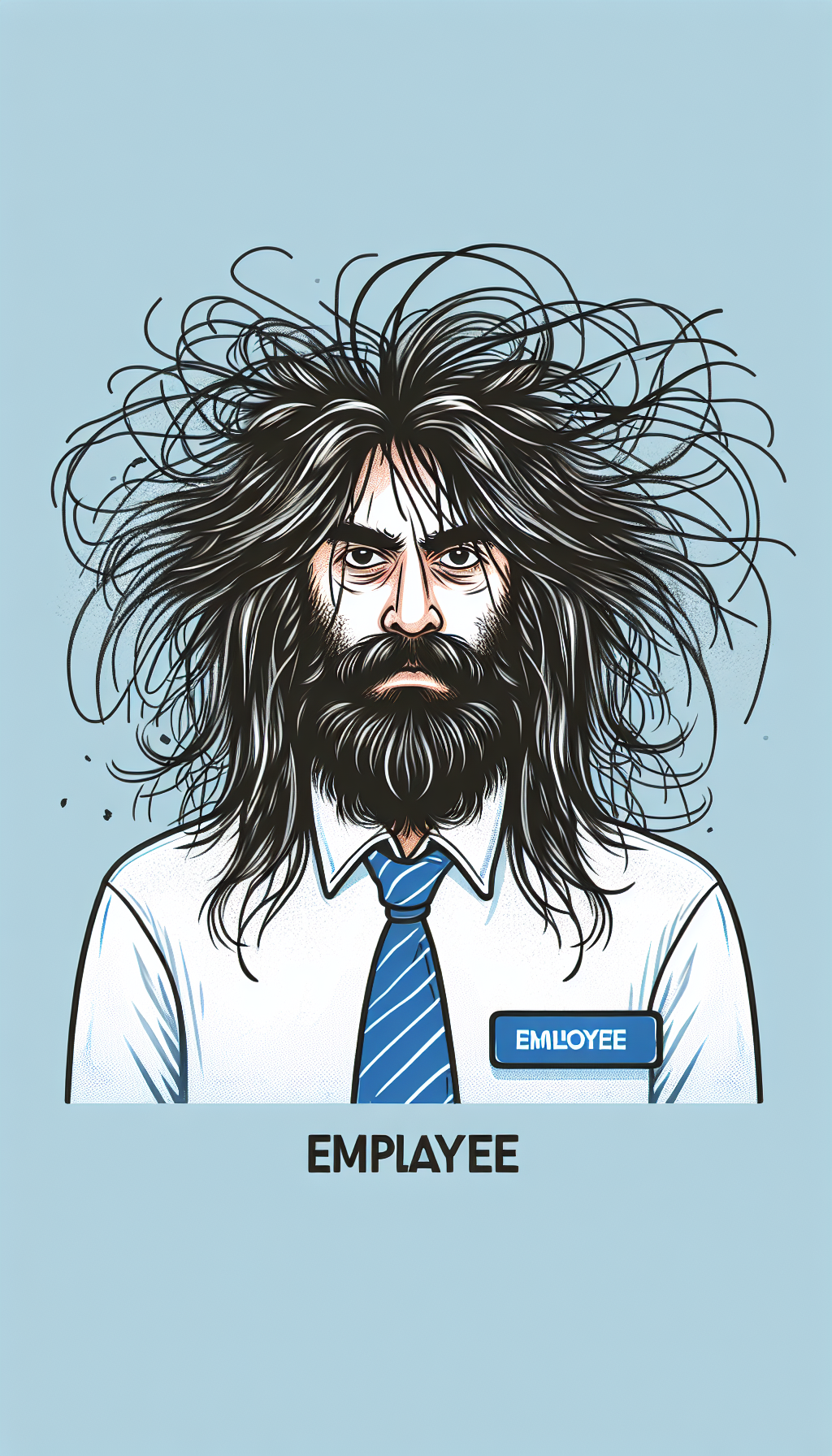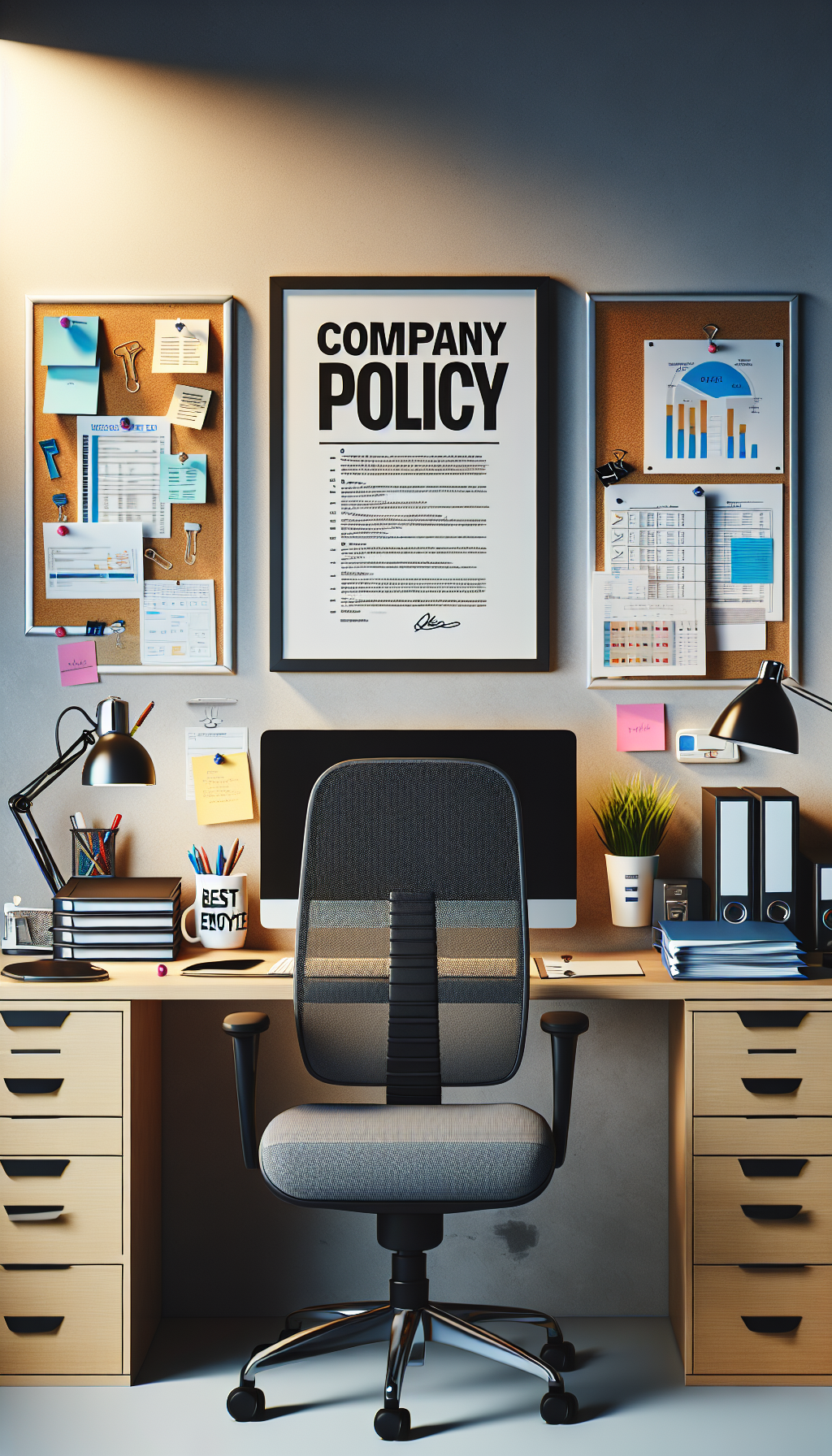Sample Company Dress Code Policy – 3 Free Samples Below

In today's dynamic professional landscape, the topic of workplace attire often sparks debate and confusion. As an employer, you understand the importance of clear guidelines, not just for operational efficiency but also for shaping your company's image and culture. A well-crafted sample company dress code policy is more than just a list of do's and don'ts; it's a statement about your organization's values, professionalism, and respect for both employees and clients.
This comprehensive guide will walk you through the critical reasons for establishing a dress code and provide you with three distinct sample policies, allowing you to choose or adapt the one that best fits your company's unique needs and environment.
Why Do I Need a Dress Code Policy?

You might think a dress code is an unnecessary formality in a world increasingly embracing flexibility. However, implementing a clear and concise dress code policy offers a multitude of benefits for your business and your team:
Projects a Professional Image: Your employees are ambassadors for your brand. How they present themselves directly influences how clients, partners, and the public perceive your company. A consistent dress code helps convey professionalism, credibility, and attention to detail, fostering trust and confidence in your organization.
Establishes Brand Identity and Culture: A dress code can subtly reinforce your company's brand identity and internal culture. For a law firm, a formal policy might underscore tradition and gravitas. For a tech startup, a more relaxed code might promote innovation and a casual, collaborative spirit. It helps define "who we are" as a company.
Ensures Safety and Compliance: In certain industries, a dress code is not just about aesthetics but about safety. Manufacturing facilities, laboratories, or healthcare settings may require specific attire (e.g., closed-toe shoes, safety goggles, hairnets) to prevent accidents or maintain hygiene standards. A policy ensures compliance with these critical safety regulations.
Reduces Workplace Distractions and Inequities: Without clear guidelines, employees may struggle with "what to wear," leading to stress or inappropriate choices that could distract others. A dress code minimizes ambiguity, prevents employees from feeling judged on their attire, and ensures a level playing field, reducing any perceived favoritism based on clothing choices.
Promotes Consistency and Unity: When everyone adheres to a similar standard, it fosters a sense of unity and teamwork. It removes visual disparities that could create unintended class or status distinctions among employees.
Sets Expectations for Different Roles: A single company might have various roles with different client-facing responsibilities. A dress code can address these nuances, stipulating different requirements for front-desk staff versus internal development teams, ensuring appropriate presentation for every interaction.
Avoids Discrimination and Accommodates Needs: A well-written dress code should be gender-neutral and inclusive, avoiding discriminatory language. It should also include provisions for reasonable accommodations based on religious beliefs, medical conditions, or disabilities, ensuring fair and equitable treatment for all employees.
By clearly defining expectations, you empower your employees to make appropriate choices, reduce potential conflicts, and ultimately contribute to a more positive and productive work environment.
1st Sample Company Dress Code Policy: Professional
Business Attire

This sample company dress code policy is ideal for companies in traditional industries, client-facing roles, or those seeking to project an exceptionally serious and polished image.
Policy Name: Professional Business Attire Policy
Effective Date: [Date] Revision Date: [Date]
Purpose: At [Your Company Name], we believe that professional presentation is integral to our success and reputation. This Professional Business Attire Policy outlines the expected standard of dress for all employees to ensure we consistently project an image of professionalism, credibility, and excellence to our clients, partners, and the public. Adherence to this policy reinforces our commitment to high standards and fosters an environment of respect and trust.
Scope: This policy applies to all employees, contractors, and temporary staff of [Your Company Name] during business hours, when representing the company at off-site events, or when meeting with clients and stakeholders, unless otherwise specified for specific roles (e.g., manufacturing, lab work where safety attire is mandated).
General Guidelines: Employees are expected to dress in neat, clean, pressed, and well-maintained professional business attire that conveys a formal and authoritative presence. Clothing should be free of rips, tears, stains, or excessive wrinkles.
Acceptable Attire:
For Men:
Suits: Full matching business suits (jacket and trousers of the same fabric and color).
Shirts: Long-sleeved, collared dress shirts in solid colors or subtle patterns. Avoid bold patterns.
Ties: Silk neckties or bow ties are mandatory, neatly tied and reaching the belt buckle.
Footwear: Polished leather dress shoes (e.g., Oxfords, loafers) in dark, conservative colors with dark socks.
Grooming: Hair should be neatly styled. Facial hair, if worn, should be neatly trimmed and well-groomed.
Accessories: Minimal and professional (e.g., watches, wedding bands).
For Women:
Suits: Professional business suits (skirt suit or pant suit) in conservative colors. Skirts should be of appropriate length, typically at or just below the knee.
Dresses: Professional business dresses with sleeves or modest necklines, worn with a blazer or jacket.
Blouses/Tops: Formal blouses or shell tops in conservative colors and patterns.
Hosiery: Stockings or pantyhose should be worn with skirts and dresses.
Footwear: Polished closed-toe professional shoes (e.g., pumps, low heels) in conservative colors. Heels should be of a reasonable height, allowing for comfortable movement.
Grooming: Hair should be neatly styled. Make-up should be subtle and professional.
Accessories: Minimal and professional jewelry.
Unacceptable Attire: The following items are considered inappropriate for professional business attire:
Casual wear (e.g., jeans, shorts, t-shirts, athletic wear, tank tops, sneakers, flip-flops).
Overly revealing clothing (e.g., low-cut tops, mini-skirts, spaghetti straps, exposed midriffs).
Clothing with offensive slogans, graphics, or imagery.
Wrinkled, stained, ripped, or ill-fitting clothing.
Excessive or distracting jewelry.
Visible tattoos or body piercings (other than conservative ear piercings) should be covered or removed.
Exceptions: Reasonable accommodations will be made for employees with religious beliefs, medical conditions, or disabilities that necessitate a deviation from this policy. Employees requiring such accommodations should discuss their needs with Human Resources. Limited exceptions may also be granted for specific company events or activities, with prior approval from management.
Enforcement: Managers are responsible for ensuring their team members adhere to this policy. Employees who fail to comply will be addressed privately by their manager and may be subject to progressive disciplinary action, including verbal warnings, written warnings, and ultimately, termination, as outlined in the company's disciplinary policy.
2nd Sample Company Dress Code Policy: Business Casual
Attire

This sample company dress code policy strikes a balance between professional appearance and employee comfort, suitable for many office environments that value professionalism without strict formality.
Policy Name: Business Casual Dress Code Policy
Effective Date: [Date] Revision Date: [Date]
Purpose: At [Your Company Name], we aim to foster a productive and collaborative work environment that balances professionalism with comfort. Our Business Casual Dress Code Policy provides guidelines for appropriate attire, ensuring that employees present a polished and credible image while enjoying a degree of flexibility in their daily wear. This policy helps maintain a professional atmosphere for internal interactions and when meeting with external partners.
Scope: This policy applies to all employees, contractors, and temporary staff of [Your Company Name] during regular business hours and company-sponsored events, unless specific roles require a different standard (e.g., client meetings requiring professional business attire or safety-mandated gear).
General Guidelines: Employees are expected to dress in clean, neat, and well-maintained business casual attire. Clothing should be in good repair, free of stains, rips, tears, or offensive graphics. The standard for business casual is attire that is less formal than a suit but more formal than typical casual wear.
Acceptable Attire:
For Men:
Bottoms: Dress slacks, khakis, or chinos (cotton twills). Avoid cargo pants or shorts.
Tops: Collared shirts (polo shirts, button-down shirts, Oxford shirts), sweaters, or vests. Casual button-down shirts are acceptable. Ties are optional.
Jackets: Sport coats or blazers are encouraged but not mandatory.
Footwear: Loafers, dress boots, boat shoes, or clean, conservative dress shoes. Socks should be worn.
Grooming: Hair should be neatly styled. Facial hair, if worn, should be neatly trimmed and well-groomed.
For Women:
Bottoms: Dress slacks, tailored trousers, khakis, skirts of appropriate length (at or just above the knee), or professional dresses.
Tops: Blouses, sweaters, twin sets, cardigans, professional shell tops, or polo shirts.
Dresses: Professional dresses that are not overly casual or revealing.
Footwear: Dress shoes, flats, conservative open-toed shoes, or dress boots. Heels should be of a reasonable height, allowing for comfort.
Grooming: Hair should be neatly styled. Make-up should be subtle and professional.
Unacceptable Attire: The following items are considered inappropriate for business casual attire:
Very casual clothing (e.g., t-shirts, sweatshirts, hooded sweatshirts, tank tops, halter tops).
Denim jeans (unless specifically designated for casual days approved by management).
Shorts, capri pants, sweatpants, athletic wear.
Flip-flops, athletic sneakers (unless for specific medical reasons), overly casual sandals.
Clothing that is transparent, overly revealing, or ill-fitting.
Clothing with offensive language, graphics, or large, distracting logos.
Ripped, torn, frayed, or excessively wrinkled clothing.
Visible undergarments.
Client-Facing Exceptions: If your role requires you to meet with clients or external partners, you are expected to elevate your attire to professional business attire, regardless of the day of the week, to ensure we present our best image.
Exceptions: Reasonable accommodations will be made for employees with religious beliefs, medical conditions, or disabilities that necessitate a deviation from this policy. Employees requiring such accommodations should discuss their needs with Human Resources. Limited exceptions may also be granted for specific company events or activities, with prior approval from management.
Enforcement: Managers are responsible for ensuring their team members adhere to this policy. Any concerns regarding an employee's attire will be addressed privately by their manager. Continued non-compliance may result in progressive disciplinary action, including verbal warnings, written warnings, and other measures as outlined in the company's disciplinary policy.
3rd Sample Company Dress Code Policy: Smart Casual with
Clear Boundaries

This sample company dress code policy offers the most flexibility, common in creative industries, tech companies, or workplaces seeking a relaxed yet respectful atmosphere. It emphasizes cleanliness and appropriateness while allowing personal expression.
Policy Name: Smart Casual Dress Code Policy
Effective Date: [Date] Revision Date: [Date]
Purpose: At [Your Company Name], we encourage an innovative and comfortable work environment that still maintains a respectful and appropriate professional demeanor. Our Smart Casual Dress Code Policy provides broad guidelines, empowering employees to express their individuality while ensuring their attire is always clean, appropriate for a professional setting, and reflects positively on our company culture. We believe that comfort can coexist with professionalism when clear boundaries are established.
Scope: This policy applies to all employees, contractors, and temporary staff of [Your Company Name] during regular business hours and company-sponsored events. Employees whose roles require specific safety gear or a more formal appearance for client meetings will be provided with additional guidelines or expectations.
General Guidelines: Employees are encouraged to wear smart casual attire that is clean, neat, in good repair, and suitable for a professional office environment. Clothing should be free of significant rips, stains, or offensive messaging. The key is to be presentable, comfortable, and conscious of how your appearance impacts your colleagues and our company image.
Acceptable Attire:
Bottoms: Clean, well-fitting jeans (without rips or excessive distressing), dress slacks, khakis, chinos, skirts, or casual dresses. Shorts may be permissible if they are tailored, modest in length (e.g., Bermuda shorts), and professional in appearance; no athletic shorts or cut-offs.
Tops: T-shirts (plain, company-branded, or with tasteful graphics), polo shirts, button-down shirts, blouses, sweaters, cardigans, and professional tops. Tank tops or spaghetti strap tops should have appropriate coverage; consider layering with a jacket or cardigan.
Dresses/Skirts: Casual dresses and skirts are acceptable, provided they are of appropriate length and modesty for a professional setting.
Footwear: Clean sneakers, casual shoes, sandals (excluding flip-flops), loafers, or boots.
Outerwear: Casual jackets, blazers, or hoodies are acceptable if clean and presentable.
Grooming: Hair should be generally tidy. Personal hygiene is expected without exception.
Unacceptable Attire: The following items are considered inappropriate for the workplace, regardless of the casual nature of this policy:
Damaged Clothing: Clothing with excessive rips, tears, holes, or stains, or items that are excessively wrinkled.
Overly Revealing Attire: Clothing that exposes excessive cleavage, midriffs, backs, or undergarments. Skirts/dresses that are excessively short.
Offensive or Controversial Graphics: Clothing with profane language, explicit images, or messages that could be considered offensive, discriminatory, or politically divisive.
Sleepwear/Loungewear: Pajamas, bathrobes, or items clearly designed as sleepwear.
Swimwear: No swimwear is permitted in the office, except when changing for approved off-site activities.
Footwear: Dirty footwear, flip-flops (except in approved break areas or for specific medical reasons), or bare feet.
Athletic Gear: While some athletic shoes are acceptable, full athletic uniforms, sweatpants (unless specifically for a team-building event), or gym shorts are not.
Client-Facing and Special Event Exceptions: If your role requires you to meet with clients, partners, or attend external events, you are expected to dress in a manner that reflects the specific expectations of that engagement, which may require business casual or professional business attire. Your manager will provide guidance for such situations.
Exceptions: Reasonable accommodations will be made for employees with religious beliefs, medical conditions, or disabilities that necessitate a deviation from this policy. Employees requiring such accommodations should discuss their needs with Human Resources.
Enforcement: This policy relies on good judgment and common sense. If an employee's attire is deemed inappropriate or disruptive, their manager will address the issue privately and respectfully. The employee may be asked to change clothes or return home to do so. Repeated non-compliance with the spirit or letter of this policy may lead to progressive disciplinary action as outlined in the company's disciplinary procedures.
Conclusion
Implementing a well-thought-out sample company dress code policy is a positive step you can take to clarify expectations, enhance your company's image, and contribute to a respectful and productive work environment. Whether you opt for the structured elegance of professional business attire, the balanced approach of business casual, or the flexible yet defined smart casual, the key is clear communication.
Review these sample company dress code policy examples, choose the one that resonates most with your organizational culture and goals, and then customize it with your company's specific details. Remember to communicate the policy clearly to all employees, explain its purpose, and ensure consistent and fair enforcement. By doing so, you're not just dictating what to wear; you're fostering an environment where everyone understands their role in projecting a consistent and professional brand image.
